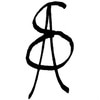|
Plein air painting an early evening street scene here in Florence. The light was perfect and it wouldn't be Italy without some scooters in there. Photo credit to my awesome roommate, Gabbi!
It also hit me today how important it is to not let too many things pass by. Just as an example: there's a pastry shop/cafe that I pass on my walk home and it always smells fantastic; I can't quite describe it, but the scent is almost nostalgic--like a classic, old bakery. So I've been passing by this little cafe and saying, "oh, I should go in there..." Today, I walked past it again, but this time I stopped and turned around and went in. I practiced my Italian by asking about a certain pastry. The older gentleman behind the counter said it was a "cornetto crema" (cream horn). I counted my money in Italian and enjoyed the pastry on my walk home. I feel this same way about any opportunities. I really want to be aware of the things that I actively miss out on. It's different if I'm unaware of something or don't want to do something. But, everything has its own time window of opportunity and I'm trying to be more aware of that as I continue traveling, exploring, painting and living.
0 Comments
There are still spaces available for my upcoming floral watercolor workshop at Stems Brooklyn. Tickets are currently on sale for $75. All skill levels are welcome and materials are provided! If you are interested in this opportunity to learn with me then please follow this link to purchase your tickets: https://stemsbrooklyn.com/product/painting-florals-with-watercolor/ I just got back from an amazing trip to Bermuda! It was my first time in Bermuda and it was really amazing. The weather, colors, culture, food and drinks of the island were wonderful. The locals were also super friendly and taught me a lot about their unique environment. I packed my watercolor plein air kit and got a lot of painting done. Many things caught my eye, but I was particularly impressed with the pink color of many of the homes, which is beautifully complemented by the blues and greens of the ocean. By the way, I learned that some of the beaches have pink sand because pink shells have been ground up by the waves over many years and mixed with the sand. Also, the roofs have a unique shape to collect rainwater because there is no freshwater source on the island. And there were many beautiful flowers such as hibiscus. For me, painting is a way of remembering special places and moments. It's also a reason for me to explore and learn about different countries. I can take my paints anywhere in the world and it gives me a connection to that area. I'm so thankful that I got to paint in this beautiful country. I only wish we could have stayed longer.. I guess I'll have to go back! The Original Rum Swizzle | "Bermuda's National Drink" Join me on Sunday, June 23rd for a floral watercolor painting workshop at Stems Brooklyn.
This workshop is for students of all levels so beginners are welcome to sign up. I will be instructing everyone on how to create a complete watercolor painting using the principles of art. All participants will be able to enjoy painting directly from a floral arrangement. Materials are provided, but space is limited so purchase your tickets soon. More info and tickets available at: https://stemsbrooklyn.com/product/painting-florals-with-watercolor/ |
Archives
July 2024
Categories
All
|














 RSS Feed
RSS Feed